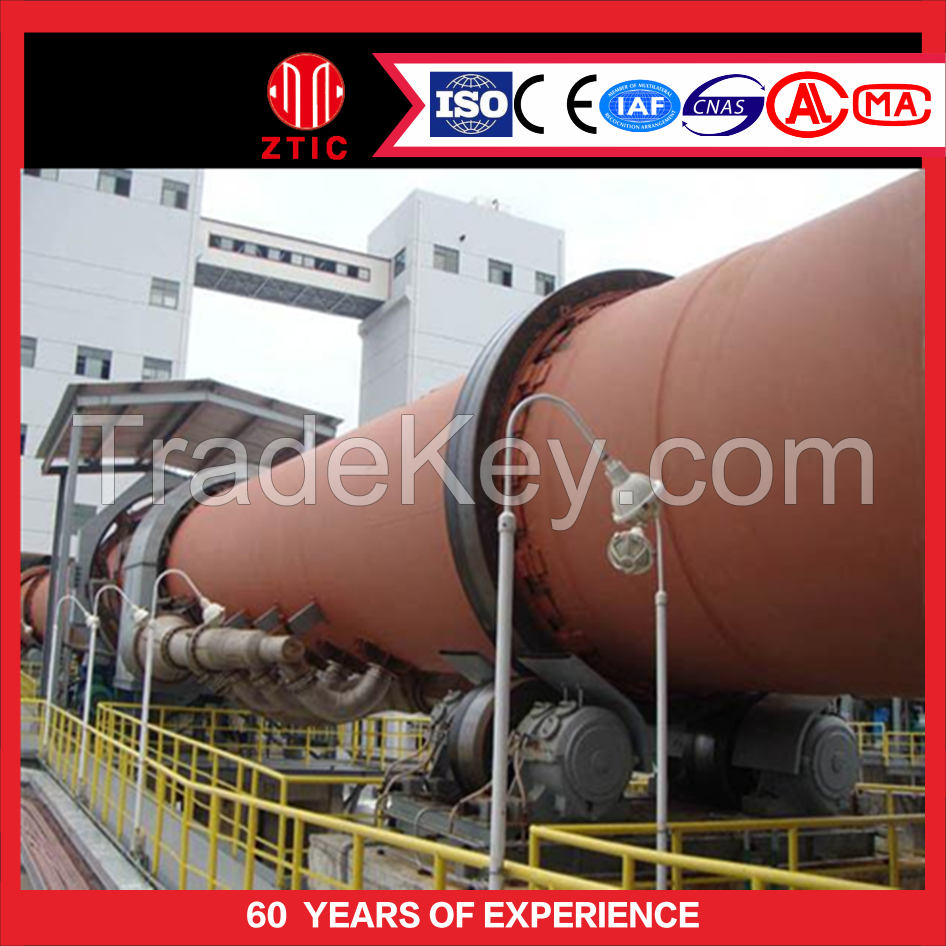Cement Rotary Kiln Wet and Dry Cement Rotary Kiln
Application Industry
Cement Plant, Steel Mill, Chemical Plant & Incinerator
Output
**0~****0 t/d
LYHMC Cement rotary kiln technical characteristics:
ΦKiln body is made of high quality composed of carbon
steel or alloy steel plate and automatic welding;
Φ Tyre,Support Roller,Open gear adopts alloy cast
steel;
Φ Sliding bearing with large gap not scraping tile
bearing;
Φ Transmission device adopts hard tooth surface
reducer, flexible diaphragm coupling, dc motor;
Φ Adopts hydraulic gear wheel;
Φ Preheater scales were used respectively to veiw of
kiln head, and cylinder pressure tight
seal;
Φ A slow drive device.
Cement Rotary Kiln Processes Wet and Dry Cement Rotary
Kiln
With the arrival of rotary kilns, cement manufacturing
processes became sharply defined according to the form in which
the raw materials are fed to the kiln. Raw materials were
either ground with addition of water, to form a slurry
containing typically ****5% water, or they were ground dry, to
form a powder or "raw meal".
In the Wet Process, the kiln system is fed with liquid
slurry, the water then being evaporated in the kiln.
In the Semi-Wet Process, raw material is prepared as a
slurry, but a substantial proportion (****0%) of the water is
mechanically removed, usually by filtration, and the resulting
"filter cake" is fed to the kiln system.
In the Dry Process, the kiln system is fed with dry raw
meal powder.
In the Semi-Dry Process, a limited amount of water
(****5%) is added to dry raw meal so that it can be nodulised,
and the damp nodules are fed to the kiln system.
Wet process cement rotary kilns Wet and Dry Cement Rotary
Kiln
The original rotary cement kilns were called 'wet process'
kilns. In their basic form they were relatively simple compared
with modern developments. The raw meal was supplied at ambient
temperature in the form of a slurry.
A wet process kiln may be up to **0m long and 6m in diameter.
It has to be long because a lot of water has to be evaporated
and the process of heat transfer is not very efficient.
The slurry may contain about *0% water. This takes a lot of
energy to evaporate and various developments of the wet process
were aimed at reducing the water content of the raw meal. An
example of this is the 'filter press' (imagine a musical
accordion ****0 metres long and several metres across) - such
adaptions were described as 'semi-wet' processes.
The wet process has survived for over a century because many
raw materials are suited to blending as a slurry. Also, for
many years, it was technically difficult to get dry powders to
blend adequately.
Dry process cement rotary kilns Wet and Dry Cement
Rotary Kiln
In a modern works, the blended raw material enters the kiln via
the pre-heater tower. Here, hot gases from the kiln, and
probably the cooled clinker at the far end of the kiln, are
used to heat the raw meal. As a result, the raw meal is already
hot before it enters the kiln.
The dry process is much more thermally efficient than the wet
process.
Cement Rotary Kiln Specification Wet and Dry Cement Rotary
Kiln





